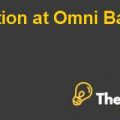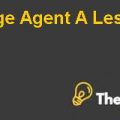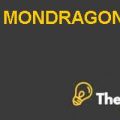
1. Why Customer Relationship Management (CRM) is important? What initiatives should be adopted by W.S Industries in order to enhance profitability from customers?
Customer Relationship Management (CRM) is a business strategy adopted by the company in order to manage the company’s interaction with the current and potential customers. The basic aim of CRM is to satisfy the needs of the customers while satisfying the needs of the organization as well.
The organization’s stability is based on repetitive sale. A satisfied customer will provide repetitive sale and will also attract new customers which will ultimately contribute towards the profitability of the whole organization. CRM helps an organization to maintain strong relations with their customers which will enhance the customer loyalty and brand value.
In order to enhance the stability from the customer, W.S Industries strongly focuses on customer satisfaction. The company is committed to provide high quality products at reduced price, which will ultimately satisfy them and provide an opportunity for them to attract new customers. Further, there were also examples where the company believe that accepting the customer’s orders would result in a loss to the company but the company accepted the orders by believing the fact that this strategy would retain them and would provide them an opportunity to gain repetitive sale.
Exhibit 7 in case study justified that the company accepted some unprofitable customer orders believing the fact that overall relationship with the customers will be profitable.
2. How target costing helped the organization to eliminate market pressure on price?
Target costing is a modern costing technique and is a customer focused approach where desired selling price will be set for the product which the customers are willing to pay. Later on a desired profit margin will be deducted from the selling price which will leave the targeted cost, such cost will be compared with the actual cost and it will result in a cost gap. The company will take initiative steps in order to eliminate such cost gap by replacing the raw material, improving the bargaining with customer to charge low prices, moving towards JIT approach, etc.
W.S Industries was facing several market pressures on price and the customers believed that the product offered by the company was bulky, which threatened the profits of the company and discouraged major shareholders. Hence, the company decided to move towards a customer focused approach by adopting a target costing approach.
The company performed a survey which turned out that the customers were willing to accept the product at Rs. 180 and the company wanted to charge a profit margin of Rs.15 on such product. Further, the company also expected that selling, distribution and finance cost would comprise of Rs. 30 which left Rs. 135 as the target cost. The company further split the cost in 60:40 and left Rs. 104 for material and Rs. 70 for processing. Exhibit 10b determines that the actual cost for the material available in the market is amounting Rs. 104.04 whereas the targeted cost of the material is only Rs. 81 which leave the cost gap of 23.04 in material cost. The company splits the cost between value and non value adding activities. The company will now focus of activities which are most valuable to the customers as compared to non value adding activities.
The company identified some activities which are most valuable to the customers that include: functionality, reliability, ease of handling and visual quality, so the organization must consider such items sensitive. Further, the company adopts a practice to allocate a percentage of total value that subjectively contributes to the customer. The targeted cost of the product is Rs.165 whereas the new cost calculated for the product remained Rs: 180 which may not be accepted by the company, so the organization shall adopt continuous improvement strategies in order to reduce cost substantially and enjoy profits in the long run.
How Kaizen costing would be an appropriate strategy for W.S Industries?
The Kaizen costing is a continuous improvement strategy especially designed for manufacturing businesses. W.S Industries operates a manufacturing business which will help the organization to reduce cost in the full cycle of design development. Further, Kaizen costing is same as budgetary control but is outside the scope of cost accounting system which usually focuses on cost reduction targets and achieves company’s objectives through continuous improvements...................................
This is just a sample partial case solution. Please place the order on the website to order your own originally done case solution.













